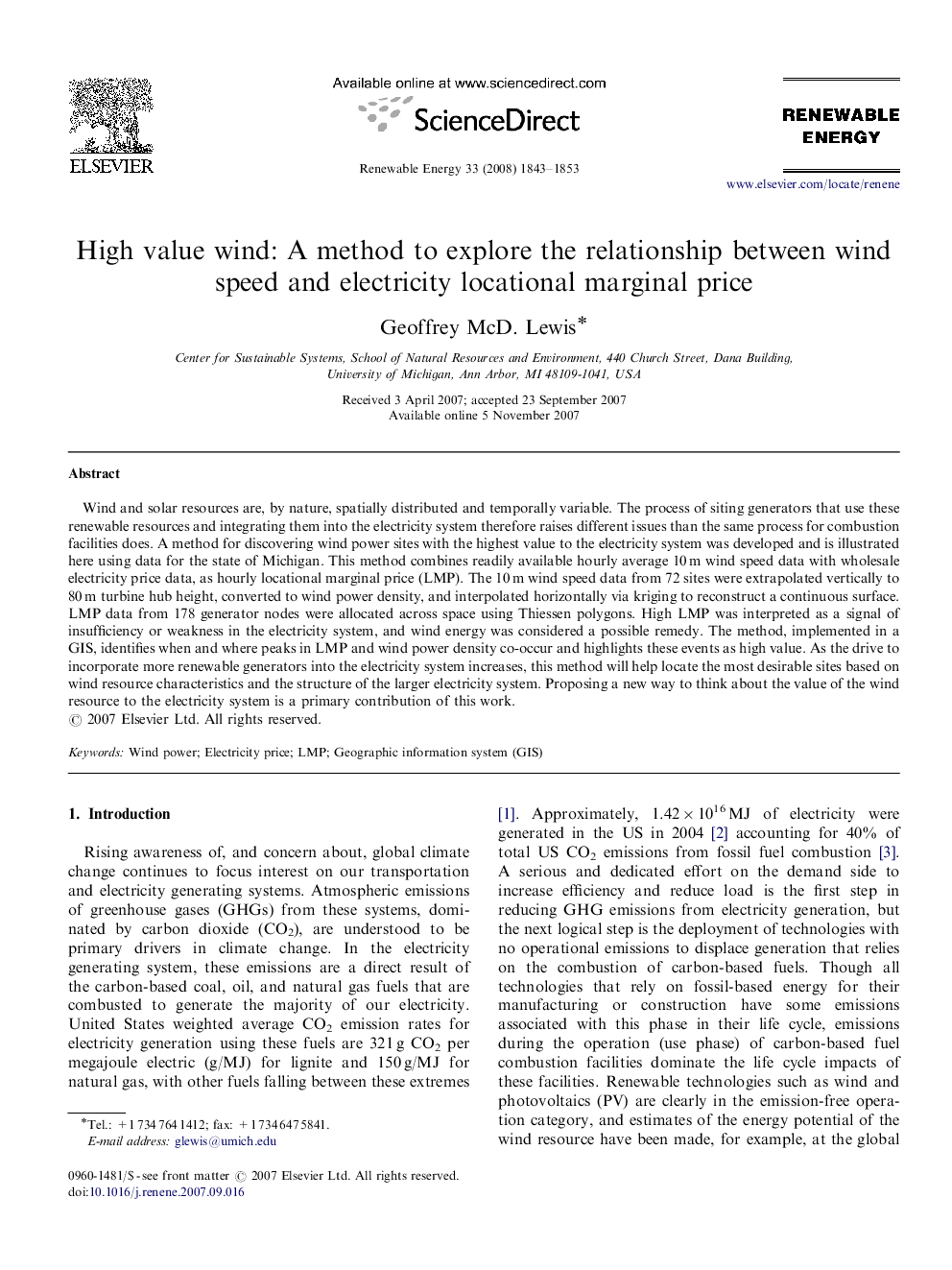| Article ID | Journal | Published Year | Pages | File Type |
|---|---|---|---|---|
| 302493 | Renewable Energy | 2008 | 11 Pages |
Wind and solar resources are, by nature, spatially distributed and temporally variable. The process of siting generators that use these renewable resources and integrating them into the electricity system therefore raises different issues than the same process for combustion facilities does. A method for discovering wind power sites with the highest value to the electricity system was developed and is illustrated here using data for the state of Michigan. This method combines readily available hourly average 10 m wind speed data with wholesale electricity price data, as hourly locational marginal price (LMP). The 10 m wind speed data from 72 sites were extrapolated vertically to 80 m turbine hub height, converted to wind power density, and interpolated horizontally via kriging to reconstruct a continuous surface. LMP data from 178 generator nodes were allocated across space using Thiessen polygons. High LMP was interpreted as a signal of insufficiency or weakness in the electricity system, and wind energy was considered a possible remedy. The method, implemented in a GIS, identifies when and where peaks in LMP and wind power density co-occur and highlights these events as high value. As the drive to incorporate more renewable generators into the electricity system increases, this method will help locate the most desirable sites based on wind resource characteristics and the structure of the larger electricity system. Proposing a new way to think about the value of the wind resource to the electricity system is a primary contribution of this work.
